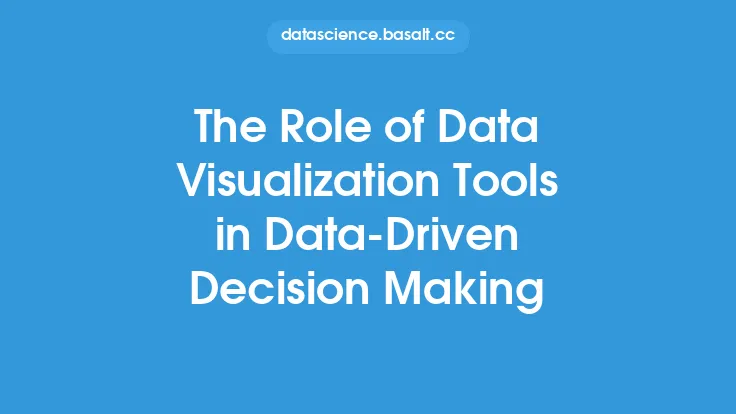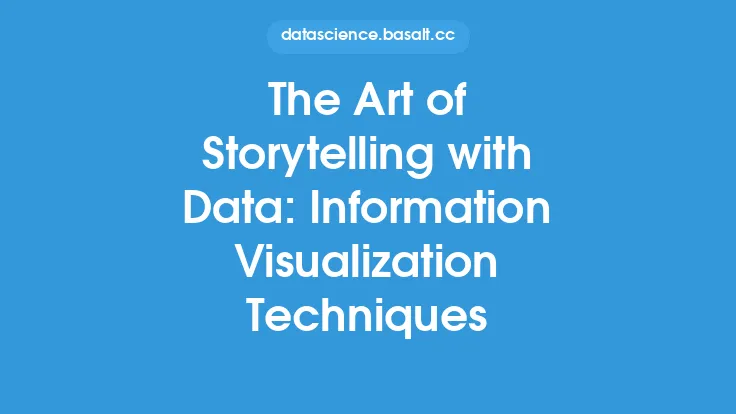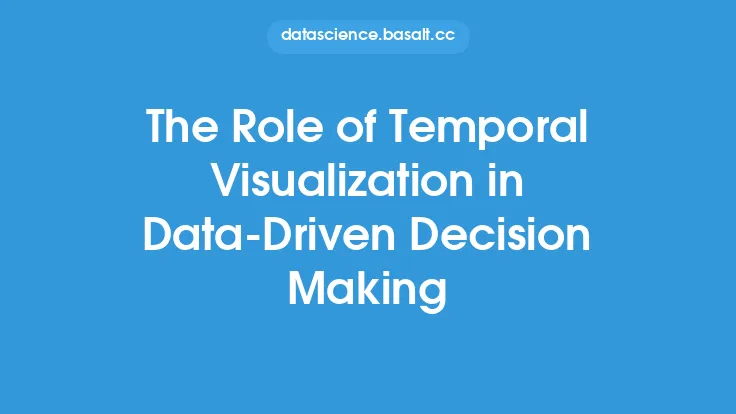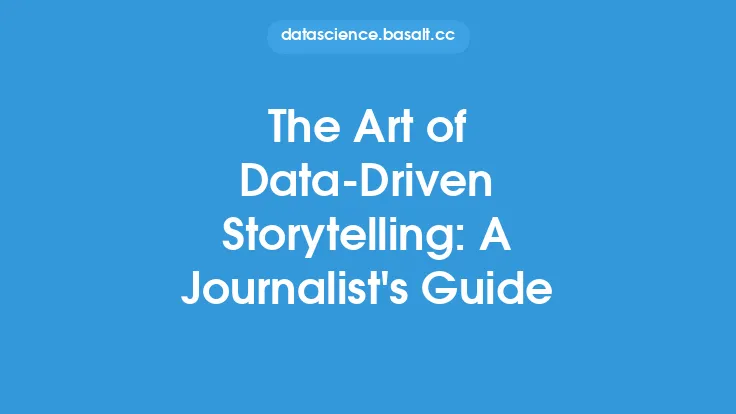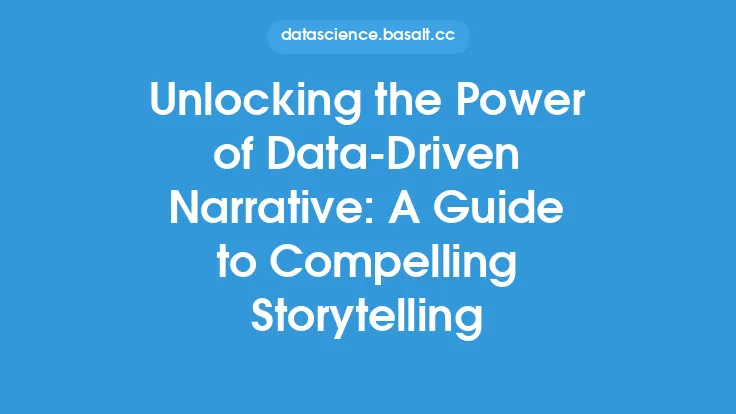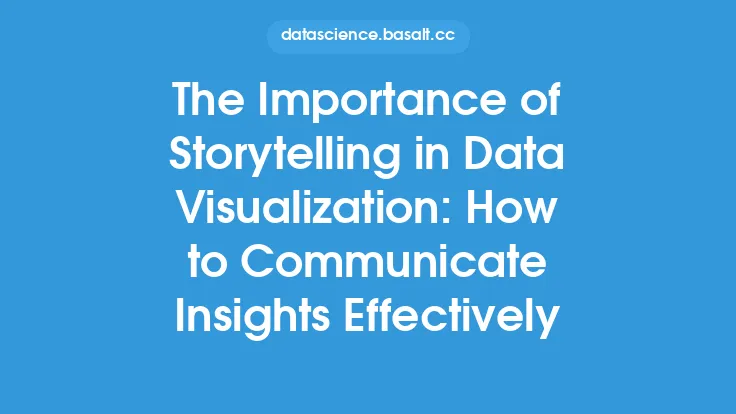In today's data-driven world, the ability to effectively communicate insights and trends from complex data sets is crucial for making informed decisions. One of the key tools used to achieve this goal is information visualization, which involves using visual representations to convey information and facilitate understanding. Information visualization plays a vital role in data-driven storytelling, enabling individuals to extract insights, identify patterns, and make sense of large amounts of data. This process is essential for transforming data into actionable knowledge that can drive business decisions, inform policy, and shape public opinion.
Introduction to Information Visualization
Information visualization is a subset of data visualization that focuses on presenting abstract data in a way that is easy to understand and interpret. It involves using a variety of visual elements, such as charts, graphs, maps, and interactive dashboards, to communicate information and facilitate exploration. The primary goal of information visualization is to enable users to quickly grasp the underlying structure and relationships within the data, rather than simply presenting the data in a raw or summary form. By leveraging the human brain's ability to process visual information more efficiently than text-based information, information visualization can help to identify trends, patterns, and correlations that might be difficult to discern through other means.
The Role of Information Visualization in Data-Driven Storytelling
Data-driven storytelling is the process of using data to tell a story that is both informative and engaging. It involves using data to identify key trends and insights, and then presenting these findings in a way that is easy to understand and relatable. Information visualization is a critical component of data-driven storytelling, as it provides a means of communicating complex data insights in a clear and concise manner. By using visualizations to illustrate key findings and trends, storytellers can create a narrative that is both compelling and informative, making it easier for audiences to understand and retain the information being presented. Furthermore, information visualization can help to facilitate exploration and discovery, enabling users to interact with the data and uncover new insights that might not have been immediately apparent.
Best Practices for Effective Information Visualization
To create effective information visualizations, several best practices should be followed. First, it is essential to understand the audience and the story being told. This involves identifying the key insights and trends that need to be communicated, as well as the level of complexity and detail that is required. Second, the choice of visualization type is critical, as different types of visualizations are better suited to different types of data and insights. For example, bar charts and line graphs are often used to show trends and patterns over time, while scatter plots and heat maps are used to illustrate relationships and correlations. Third, the visualization should be designed with simplicity and clarity in mind, avoiding unnecessary complexity and visual clutter. Finally, the visualization should be interactive, enabling users to explore the data and uncover new insights.
Technical Considerations for Information Visualization
From a technical perspective, information visualization involves a range of tools and technologies, including data visualization software, programming languages, and data storage systems. Some of the most popular data visualization tools include Tableau, Power BI, and D3.js, which provide a range of features and functionalities for creating interactive and dynamic visualizations. In terms of programming languages, Python and R are widely used for data visualization, due to their extensive libraries and frameworks for data manipulation and visualization. Additionally, data storage systems such as relational databases and NoSQL databases are used to store and manage the underlying data, providing a foundation for information visualization.
The Future of Information Visualization
As the field of information visualization continues to evolve, several trends and developments are likely to shape its future. One of the most significant trends is the increasing use of artificial intelligence and machine learning, which are being used to automate the visualization process and provide personalized recommendations. Another trend is the growing importance of big data and the Internet of Things, which are generating vast amounts of data that need to be visualized and analyzed. Additionally, the rise of virtual and augmented reality is likely to have a significant impact on information visualization, enabling the creation of immersive and interactive visualizations that simulate real-world environments. Finally, the increasing focus on data literacy and visualization skills is likely to drive demand for information visualization tools and technologies, as well as training and education programs.
Conclusion
In conclusion, information visualization plays a vital role in data-driven storytelling, enabling individuals to extract insights, identify patterns, and make sense of complex data. By leveraging the human brain's ability to process visual information, information visualization can help to communicate complex data insights in a clear and concise manner, facilitating exploration and discovery. As the field of information visualization continues to evolve, it is likely to be shaped by trends such as artificial intelligence, big data, and virtual reality, as well as the growing importance of data literacy and visualization skills. By understanding the principles and best practices of information visualization, individuals can create effective visualizations that tell a story, convey insights, and drive decision-making.
